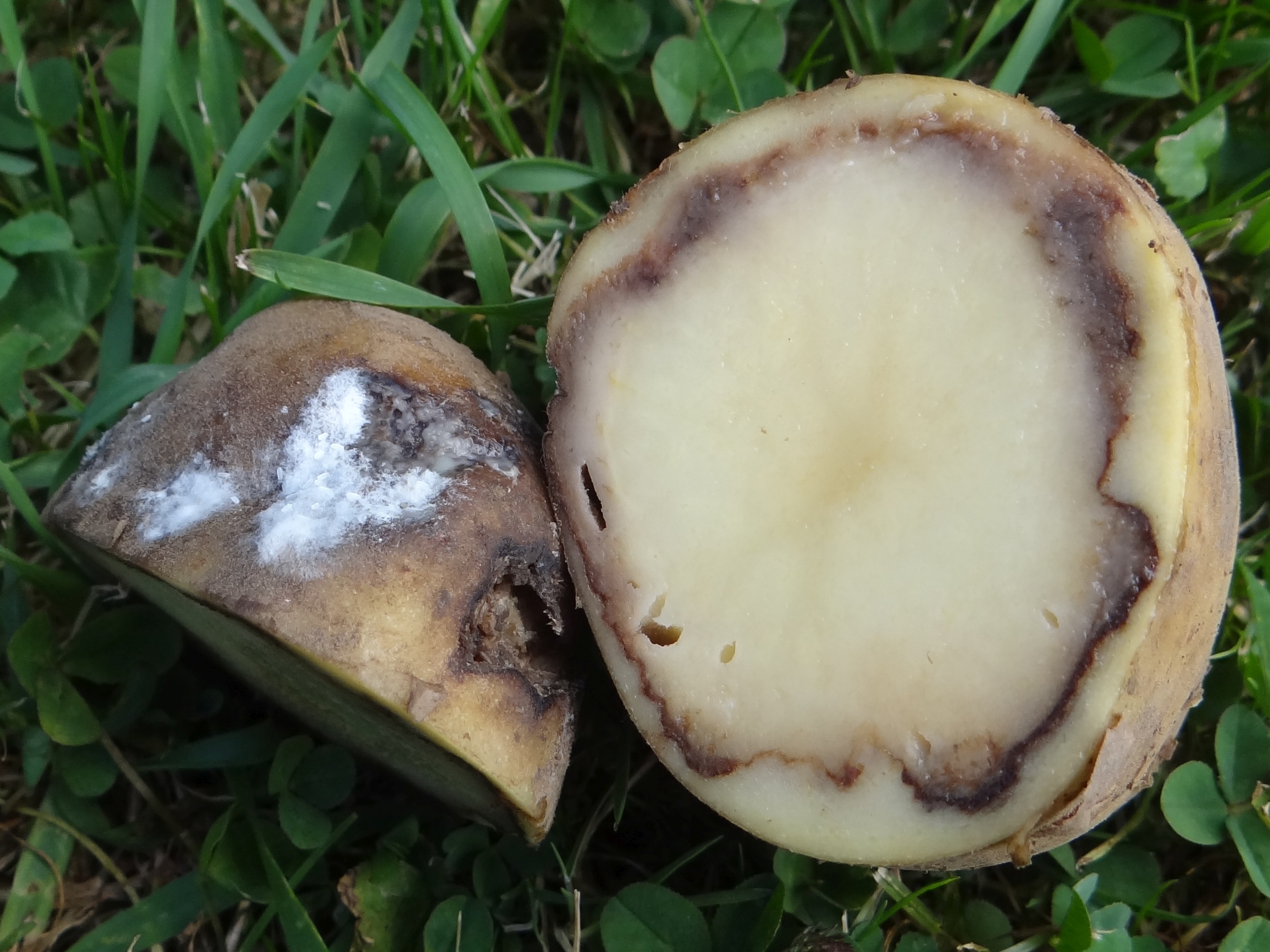
Late blight
Phytophthora infestans
What is Late blight (Phytophthora infestans)?
Late blight, also known as potato blight, is a devastating plant disease caused by Phytophthora infestans. The disease is responsible for the Irish potato famine. Symptoms include lesions on leaves, petioles, and stems, with a whitish growth of spore-producing structures on the underleaf surfaces. Potato tubers develop rot. The rot can penetrate up to 15 mm (0.6 inches) deep, causing significant losses during storage, transit, and marketing.
How does Late blight (Phytophthora infestans) occur?
P. infestans reproduce through both sexual and asexual means. Sporangia, which are asexual spores, and sexual oospores are dispersed by wind and can infect nearby plants within hours. Below 15 °C (59 °F), sporangia germinate by producing zoospores with flagella. Above that temperature, most sporangia produce a germ tube directly. Foliage blighting and new sporangia are produced within four to six days after infection. The cycle continues in cool, moist weather. The oospores, with their thickened walls, can persist in the soil for several seasons, making eradication challenging.
Symptoms
1 - Effects on Plants
• Phytophthora infestans cause rapid rotting, and lesions on leaves, stems, and tubers, leading to significant crop damage and yield loss. • The disease, responsible for the Irish potato famine, results in spore-producing structures on leaves and deep rot in potato tubers, causing losses during storage and transportation.
2 - Effects on Soil
Late blight can introduce pathogens into the soil ecosystem through infected plant debris, potentially impacting soil health and crop rotation practices.
Solutions
1 - Cultural Practices
• Avoid planting crops in the same location year after year to reduce the buildup of the pathogen in the soil. • Start with healthy seedlings or certified disease-free seeds to minimize the risk of introducing the pathogen. • Provide adequate plant spacing to ensure good air circulation and reduce humidity, creating an unfavorable environment for the disease. • Immediately remove and destroy any plants showing symptoms of late blight to prevent the spread of the disease.
2 - Resistance Cultivars
• Some known examples include the potato varieties 'Kennebec', 'Agria', and 'Sarpo Mira', which exhibit strong resistance to late blight. In tomatoes, varieties like 'Mountain Magic', 'Iron Lady', and 'Defiant' are known for their resistance to late blight. • However, it is important to note that no variety is completely immune, and proper management practices should still be followed.
3 - Chemical control
• Systemic fungicides like dimethomorph, cymoxanil, fluopicolide, and propamacarb have been approved and registered for controlling late blight. • It is recommended for growers to rotate the use of different fungicides to prevent the development of resistance in the pathogen, following the instructions provided by the manufacturer and local agricultural authorities.
